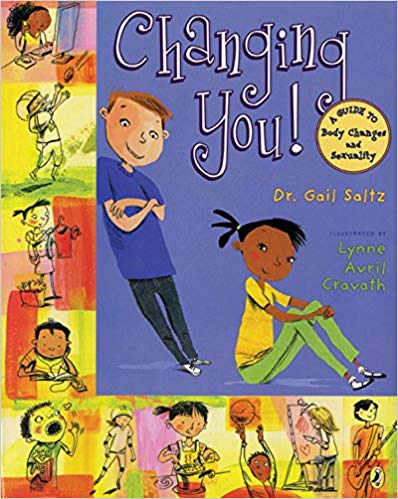What Are The Stages Of Pregnancy?
This video outlines the different stages of pregnancy. It takes viewers through each trimester of a pregnancy and explains some of the physical and emotional changes a person may experience during each one. It also explains how labor begins and the two types of birth. [AMZ-092]
Youth
Do you know where babies come from? When a sperm from one person and an egg from another person join and implant in a uterus, a pregnancy has begun. There are different ways this process can happen, including sexual intercourse and certain medical procedures. Pregnancy lasts about 40 weeks from the first day of a person’s last menstrual period. A pregnancy is divided into three sections called trimesters.
When it’s time for the baby to leave the uterus, generally the uterus squeezes the baby out through the cervix, into the vagina and out the vaginal opening. Babies can also leave the body through a surgical procedure called a Cesarean section (or C-section). A C-section may be done when a vaginal birth is not recommended for a variety of reasons. After the baby comes out of the uterus, the umbilical cord is cut. (This doesn’t hurt the baby or the mother.) The umbilical cord provides food and nourishment to the fetus while in the uterus. Once it is cut, it eventually becomes the belly button on all humans.
While there are many medical issues and conditions that can effect a pregnant person and their fetus, generally pregnancy and birth are very normal and natural processes.
FAQs
When a male and female are very attracted to each other, they may decide to have sexual intercourse. The male’s erect penis is placed into the vagina. If the penis releases semen (a process called ejaculation) in the vagina or on the vaginal opening, then semen can get into the vagina. Semen contains sperm, and if the female has released an egg from her ovary (a process called ovulation), one of those sperm could unite with the egg and begin the process of reproduction.
There are a lot of myths out there about if, how, and when someone can or can’t get pregnant. The truth is, once you start to go through puberty, it’s possible to get pregnant or to get someone pregnant. That’s why it’s so important to know how pregnancy happens and how to prevent it if you or your partner are not ready.
For a pregnancy to form, a sperm and an egg have to join, which usually happens through sexual intercourse. However, there are lots of ways that people form families. For example, some people adopt babies and some people have two moms, two dads or just one parent.
Additional Resources
Parents
Talking to your children about puberty and basic reproductive anatomy lays the foundation for them to learn the facts about reproduction. Parents or guardians can explain that penile-vaginal intercourse is when an erect penis is placed in a vagina. If the penis releases semen (a process called ejaculation) in the vagina or on the vaginal opening, and the ovary has released an egg, then a single sperm in the semen could unite with an egg and begin the process of reproduction. The fertilized egg would then implant inside of the uterus to begin a pregnancy. If a pregnancy does not occur, the uterine lining is shed about once a month during a process called menstruation. Parents can also explain that sexual intercourse is just one way that an egg and sperm might join. There are also medical procedures that can be used to join a sperm and an egg.
Generally, one fetus develops at a time, but it is also possible to have twins, triplets or even multiple pregnancies developing, sometimes as a result of more than one egg being fertilized, sometimes as a result of a fertilized egg splitting and sometimes as a result of medical procedures designed to help a person become pregnant.
Pregnancy lasts for about 40 weeks. For a pregnant person and the developing fetus to be as healthy as possible, it is generally advised that the pregnant person be under the care of a midwife or obstetrician as soon as they know they are pregnant. A health care provider may advise a pregnancy person to take specific vitamins as well as make changes to their diet and sleep routine in order to have a healthy pregnancy.
The 40 weeks of pregnancy are divided into three trimesters. Generally, in the first trimester, the pregnant person might feel some “morning sickness,” which can be mild to severe and can include nausea and/or vomiting and can happen anytime of the day or night. Additionally, it is common for a pregnant person to feel very tired, very sensitive to smell, have food cravings, have swollen and tender breasts and have to urinate more frequently. These are all normal signs of early pregnancy.
Weight gain is more noticeable in the second trimester of pregnancy, defined at weeks 13 to 28. During this trimester, the pregnant person will begin to feel the fetus moving around independently, which is called “quickening.” Some people also notice their skin stretching, which may be itchy or cause stretch marks. Their breasts are getting larger, and they may experience backaches and/or swollen ankles, as the typical weight gain for a pregnancy is about 30 to 35 pounds. This is the trimester when the pregnant person can learn the biological sex of their fetus if they want to.
During the third trimester, from weeks 29 to 40, the pregnant person may have more pronounced experiences of heartburn, shortness of breath, backaches, trouble sleeping, swollen ankles and other body parts, and general discomfort. These experiences are the result of the uterus stretching. The uterus is expanding to accommodate a fetus that may be 7 to 8 pounds at birth; the placenta, which helps provide nourishment for the fetus; and the amniotic fluid, which surrounds the fetus in the uterus. Some people may start to feel contractions a few weeks or days before childbirth in preparation for birth.
During delivery, generally the uterus contracts to push the baby out through the cervix, into the vaginal canal and out the vaginal opening. Babies can also leave the body via a surgical procedure called a Cesarean section (or C-section), which is done when a vaginal birth is not advisable for a variety of reasons. After the baby leaves the uterus, the umbilical cord, which has been providing food and nourishment to the fetus while in the uterus, is cut and eventually becomes the belly button on all humans. While there are many medical issues and conditions that can have an impact on a pregnant person and their fetus, generally pregnancy and birth are very normal and natural process.
Conversation Starters
“Today I learned that your aunt is having another baby! Pregnancy is a pretty incredible process. What have you learned about how pregnancy happens?”
“Do you think those two characters are ready to have a baby?” You could also ask, “How do you think they could have prevented the pregnancy?”
Educators
Educating students about puberty and basic reproductive anatomy lays the foundation for them to learn the facts about reproduction. It’s important that students have accurate information about how pregnancy happens. Students should learn that penile-vaginal intercourse is when an erect penis is placed in a vagina. If the penis releases semen (a process called ejaculation) in the vagina or on the vaginal opening, and the ovary has released an egg, then a single sperm in the semen could unite with an egg and begin the process of reproduction. The fertilized egg would then implant inside of the uterus to begin a pregnancy. If a pregnancy does not occur, the uterine lining is shed about once a month during a process called menstruation. Students should also learn that sexual intercourse is just one way that an egg and sperm might join. There are also medical procedures that can be used to join a sperm and an egg.
Generally, one fetus develops at a time, but it is also possible to have twins, triplets or even multiple pregnancies developing at the same time, sometimes as a result of more than one egg being fertilized, sometimes as a result of a fertilized egg splitting and sometimes as a result of medical procedures designed to help a person become pregnant.
Educators can begin to demystify pregnancy by making sure students have basic information about reproduction, like learning that pregnancy lasts for about 40 weeks. Students can also learn about how pregnant people can have a healthy pregnancy. For example, for a pregnant person and the developing fetus to be as healthy as possible, it is advised that the pregnant person be under the care of a midwife or obstetrician as soon as they know they are pregnant. This health care provider may advise a pregnancy person to take specific vitamins as well as make changes to their diet and sleep routine in order to have a healthy pregnancy.
The 40 weeks of pregnancy are divided into three trimesters. Generally, in the first trimester, the pregnant person might feel some “morning sickness,” which can be mild to severe and can include nausea and/or vomiting and can happen anytime of the day or night. Additionally, it is common for a pregnant person to feel very tired, very sensitive to smell, have food cravings, have swollen and tender breasts and have to urinate more frequently. These are all normal signs of early pregnancy.
Weight gain is more noticeable in the second trimester of pregnancy, defined at weeks 13 to 28. During this trimester, the pregnant person will begin to feel the fetus moving around independently, which is called “quickening.” Some people also notice their skin is stretching, which may be itchy or cause stretch marks. Their breasts are getting larger, and they may experience backaches and/or swollen ankles, as the typical weight gain for a pregnancy is about 30 to 35 pounds. This is the trimester when the pregnant person can learn the biological sex of their fetus if they want to.
During the third trimester, from weeks 29 to 40, the pregnant person may have more pronounced experiences of heartburn, shortness of breath, backaches, trouble sleeping, swollen ankles and other body parts, and general discomfort. These experiences are the result of the uterus stretching. The uterus is expanding to accommodate a fetus that may be 7 to 8 pounds at birth; the placenta, which helps provide nourishment for the fetus; and the amniotic fluid, which surrounds the fetus in the uterus. Some people may start to feel contractions a few weeks or days before childbirth in preparation for birth.
During delivery, generally the uterus contracts to push the baby out through the cervix, into the vaginal canal and out the vaginal opening. Babies can also leave the body via a surgical procedure called a Cesarean section (or C-section), which is done when a vaginal birth is not advisable for a variety of reasons. After the baby leaves the uterus, the umbilical cord, which has been providing food and nourishment to the fetus while in the uterus, is cut and eventually becomes the belly button on all humans. While there are many medical issues and conditions that can have an impact on a pregnant person and their fetus, generally pregnancy and birth are very normal and natural process.
National Sex Education Standards
List the major milestones of each trimester of fetal development utilizing medically accurate information
International Technical Guidance on Sexuality Education
Discussion Questions
- What are some things a pregnant person may experience during pregnancy, according to the video?
- What is one of the signs that labor has begun?
- If a pregnant person cannot have a vaginal delivery for some reason, how else might they deliver a baby?
- Why is it important to know what to expect during a pregnancy?
- Who could a person talk to if they have other questions about pregnancy?




